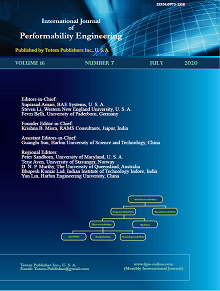-
A Combinatorial Method based on Machine Learning Algorithms for Enhancing Cultural Economic Value
- Yuqing Qi, Wei Ren, Meiyu Shi, and Qinyun Liu
-
2020, 16(7):
1105-1117.
doi:10.23940/ijpe.20.07.p13.11051117
-
 Abstract
Abstract
 PDF (574KB)
PDF (574KB)

-
References |
Related Articles
Cultural heritage is created by people all around the world in a long history. Heritage sites connect with normal people on the tourism aspect and present close relationships with people's normal life. However, some problems have appeared in the cultural heritage sites' establishment process, such as being over commercialised, over developed, and damaging the nature. To maintain the balance between human living and nature and improve the cultural heritage popularity, work should be done with all available technologies, like AI and Creative Computing. AI can be used for supervising the cultural heritage area for the protection aim. The back propagation neural network is used in this research for supervising and protecting the heritage site. Meanwhile, the cultural heritage tourism value is a kernel index to evaluate people's interest in the heritage. To enhance the popularity of cultural heritage, improving the tourism value of cultural heritage is required. As artificial intelligence can complete complex data analysis, the cultural heritage value elements can be fully explored by this method. The tourism elements of the cultural heritage can be expanded with the associated learning algorithm connected with public databases. Novel elements could be discovered, for example by attempting different combinations of heritages. Based on Boden's theory, the transformational method can achieve creativity. Therefore, traditional elements can be replaced by novel elements to generate new tourism element sets that can be applied in the cultural heritage sites. Then, creative computing theories are used for combining computer techniques and tourism activities to complete the cultural heritage protection and tourism value improvement. Furthermore, the performability of this approach is considered as imperative characteristics during the approach generation process. Achieving sustainability and dependability are necessary for the approach (or services, systems and so forth) application in target realms. The entire workflow of this approach for evaluating tourism value and identifying novel fusions among tourism elements has positive influences on approach performance. A system could be developed based on this approach, which would have stable outputs for improving tourism values.

